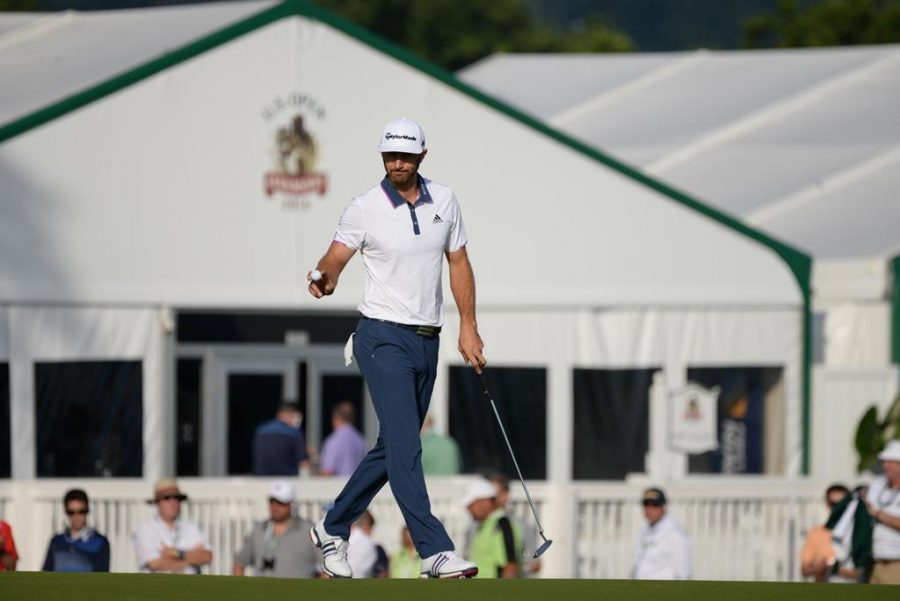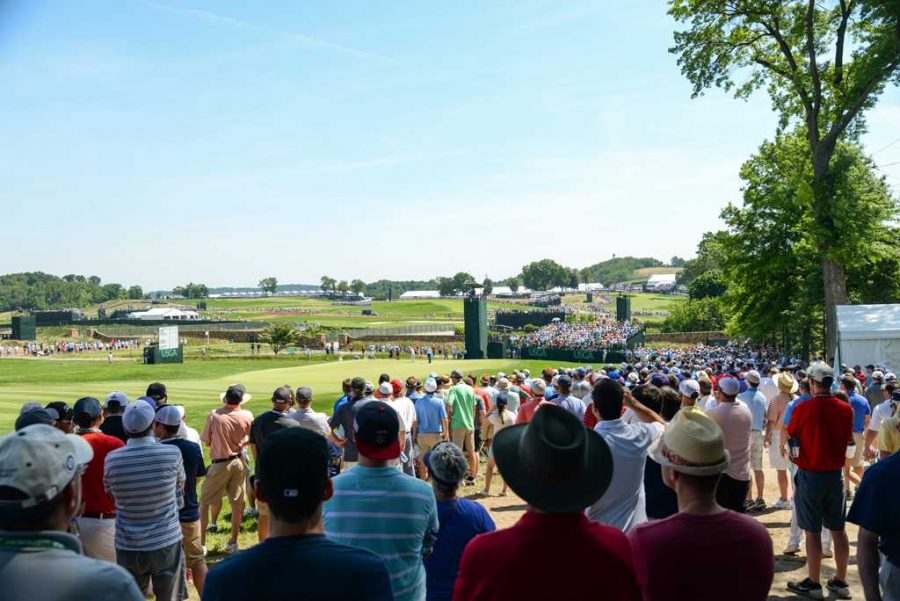The 2016 U.S. Open Championship returned this past weekend to historic Oakmont Country Club in Oakmont, Pennsylvania, for the ninth time –– more than any other course in the world.
Praised as one of the world’s most beautiful golf courses, Oakmont is also arguably the most difficult. And when the national championship comes around, United States Golf Association officials do everything in their power to make the course as unforgiving as possible.
They roll the notoriously fast greens until they no longer resemble a viable putting surface. They grow the grass in the deep rough about four inches high, move the holes to the most precarious spot on the green and position the tee boxes so far away the flags are virtually out of sight.
The goal? To create the most challenging test possible for the world’s best golfers, where finishing at even par is often sufficient to secure the championship.
Hometown favorite Jim Furyk, Scott Piercy and 54-hole leader Shane Lowry all finished below par at 1-under 279, but that was only good enough for second place this time.
Dustin Johnson –– the longest driver on the PGA Tour, who entered the tournament as the No. 6 ranked golfer in the world –– became the 116th U.S. Open champion with a 4-under 276, claiming his first major championship and exorcising a long line of demons in the process.
The 31-year-old Johnson’s struggles to close out major championships on Sundays have been chronicled and analyzed for years now.
In the 2010 U.S. Open, Johnson took the 54-hole lead into play Sunday only to shoot a final round 82 and fall out of contention.
Two months later at the 2010 PGA Championship, Johnson mistakenly grounded his club in a stray bunker, incurring a two-stroke penalty on the 72nd hole that cost him a spot in the playoff with Martin Kaymer and Bubba Watson.
At the 2015 U.S. Open, Johnson had maybe his best chance yet to silence the naysayers. A massive 357-yard drive followed by a 247-yard approach shot set him up for a chance to win the championship with a 12-foot eagle putt.
But Johnson pushed the putt four feet past the hole and missed the ensuing birdie putt that would have forced an 18-hole playoff with 21-year-old Jordan Spieth.
Instead, Spieth celebrated his second consecutive major victory near the scoring trailer while Johnson settled for second place yet again.
This year, as Johnson mashed his way up and down the storied course at Oakmont en route to the 36-hole lead entering the weekend, the questions really started to heat up.
Would this be the time he finally won a major? Would he crack under the pressure again? Was he destined to go down as the best golfer to never win a major championship?
By Sunday night, everyone had their answers.
After posting a 1-over 71 in round three, Johnson started his final round four shots behind the leader, Lowry. Many believed Johnson would benefit from being the hunter this time rather than the hunted.
Johnson signaled that the chase was on at 3:20 p.m., Sunday, blasting a mammoth 378-yard drive almost a quarter of a mile down the middle of the fairway on his first tee shot.
Lowry and Andrew Landry had yet to tee off in the final pairing, but a swarm of spectators followed Johnson and Lee Westwood down the fairway and trailed them the rest of the way. Westwood fell out of contention early, but it was clear that the crowd was there to see “DJ.”
Starting the final round of a major tournament on top of the leaderboard was a completely new experience for Lowry, and the spectacle of the moment appeared to wear on him.
Johnson continued to crush tee shots, avoid the rough and find greens in regulation. He birdied the par-4 ninth, Lowry followed with a bogey and the two were tied atop the leaderboard at 4-under heading into the back nine.
At least, that’s what most people believed.
Players, commentators and spectators alike were shocked to find out that the USGA was reviewing the tape of Johnson’s putt on the fifth green. More specifically, they were reviewing what happened before that putt.
Depending on your perspective, Johnson’s ball may or may not have moved a fraction of an inch before his putt. But if he never addressed the ball, it’s hard to say he caused it to move.
The USGA, though, deemed it was “more likely than not” that Johnson was at fault.
Johnson alerted a rules official of the possible violation before finishing the hole, then moved on. But an official interrupted him at the 12th tee to let him know the USGA was investigating what happened on the fifth green and that he could be assessed a one-stroke penalty.
Commentators, spectators and even fellow pro golfers expressed disbelief at the possibility of a penalty for not even contacting the ball. The USGA released a statement regarding the ruling Monday night.
“Upon reflection, we regret the distraction caused by our decision to wait until the end of the round to decide on the ruling,” the statement said. “This created unnecessary ambiguity for Dustin and the other players, as well as spectators on-site, and those watching and listening on television and digital channels.”
Meanwhile, Johnson gave himself a three-shot lead entering the final hole after par-saving putts on 16 and 17.
A perfectly executed drive and approach shot set Johnson up for a can’t-miss birdie putt on 18, which he sunk to the roaring approval of the crowd. He took a four-stroke lead into the clubhouse, rendering the one-stroke penalty –– which was enforced at the completion of the round –– obsolete.
“I hit two great shots on 18. [The second shot] might be one of the best shots I ever hit,” Johnson told reporters after the championship. “So that was very nice to have a short putt like that to get it in the house.”
Forced to go through the final seven holes without knowing his official place on the leaderboard, with all of his past failures creeping back into focus, Johnson could have easily folded under the immense pressure.
Instead, Lowry was the one who crumbled while Johnson conquered all –– his opponents, his demons, the world’s toughest course and, most of all, the USGA.



